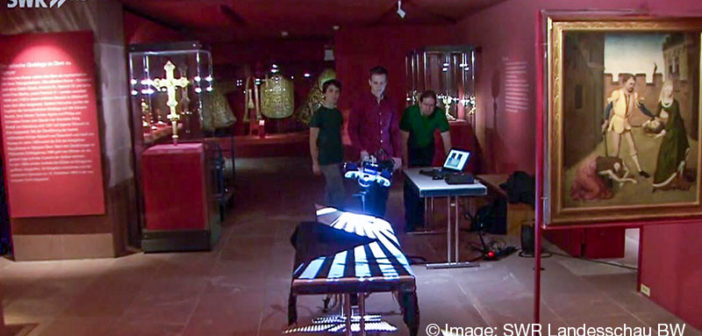The text of a nearly 1,000 year old lead plate from the Speyer Cathedral (Germany) represents an interesting witness for medievalists, as it is a particular burial object. It belongs to the tomb of Gisela, the wife of Konrad II.; she died in the year 1043. Unfortunately, the hardly visible text could not be deciphered so far – until a very special encounter took place: Middle Ages meet 3D scanner.
“The rule of thumb is: If you think you can recognise something, we can usually help to make it visible again with methods taken from information science” explains Hubert Mara of the Interdisciplinary Center for Scientific Computing (IWR) at the University of Heidelberg. The AICON SmartScan’s highly precise cameras record even smallest irregularities in the weathered, partly destroyed surface. After the calculation of the 3D data, actually more lines are visible, parts of the text are only fine outlines. The art historian Matthias Untermann presumes that the writer did not have time to work out the text details as the coffin had to be closed.
Thanks to the 3D data, the expert on Middle Ages now recognises numerous names of bishops. At that time, such a guest list was not common for a funeral. But it provides a clear indication that the consecration of the Speyer Cathedral’s eastern part must have taken place simultaneously. With the help of the AICON SmartScan it is possible to exactly date this historical event for the first time. Matthias Untermann is excited: “Now we have left hypothesis and arrive at knowledge!”














